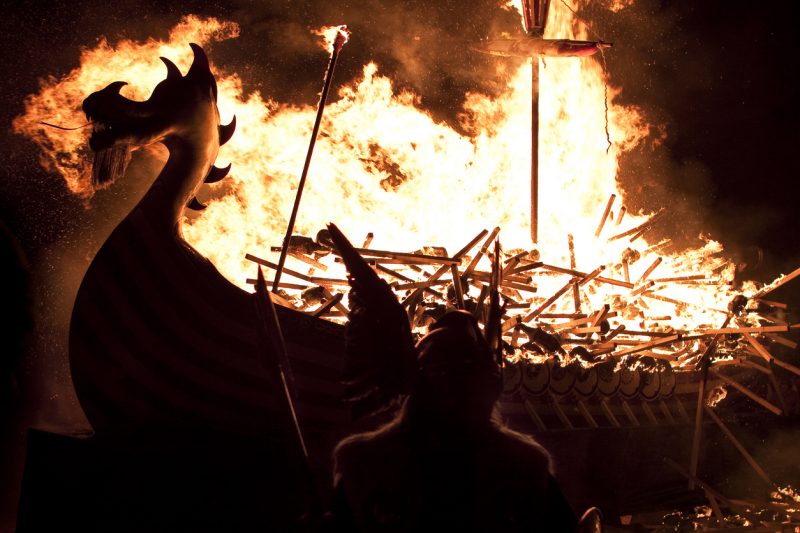It’s a common enough scene from movies and TV shows: a seaside village on the English coast, sometime in the Dark Ages. Peasants, monks and merchants are all going about their business in peace when suddenly, a cry of alarm is raised. Sails have been spotted on the horizon. And not just any sails…but the red and white striped sails of Viking longships.
Red and white – the colors of blood, of bone, of the carnage that is to come. Panic immediately sets in and pandemonium ensues, for the sight of those sails signifies the imminent arrival of a band of brutal, merciless warriors armed with spears, swords, and much-feared Dane axes. They are coming to kill, rape, pillage and plunder, and the only people they will leave alive are those they will take as slaves.
When watching historically-themed TV shows and movies, it’s easy to get caught up in the on-screen drama and the (usually) magnificent historical costumes, settings, armor, weapons and mis-en-scene, and simply take for granted or outright forget about any notion of historical accuracy in the way the period is represented.
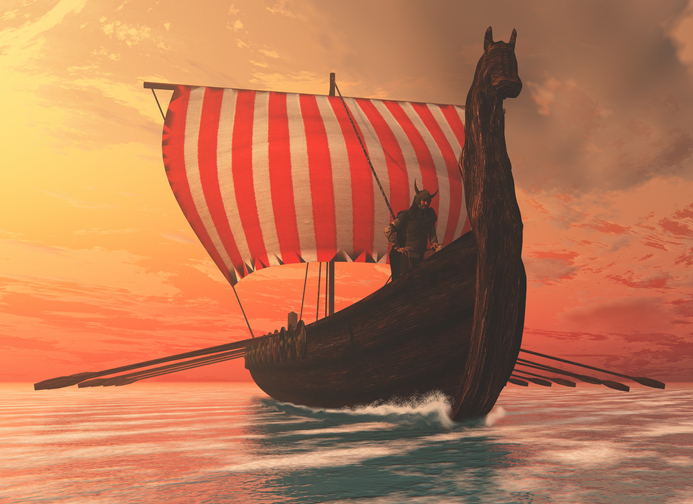
Because so many Viking-themed TV shows and movies, not to mention paintings and comic books, have represented Vikings in a very specific, stereotypical manner, we often forget to question if these representations have any basis in historical truth at all.
This goes for the question of whether Viking longship sails were actually red and white. Is that a modern invention, done simply because it looks good on camera, like so many other Viking tropes?

Unlike other questionable representations of Viking dress, armor and culture – such as horned helmets or only dressing in biker-style studded leather gear – there is actually some historical evidence for portraying the sails of Viking longships as being red and white, and for them being square, another point which has been debated.
While no fully intact sails from the Viking age have been discovered or are likely to be discovered, since the materials from which they were constructed, such as leather, wool or linen, decompose quickly, there are other primary sources from the era which indicate that the sails would likely have been red, red and white, or perhaps even a host of other colors. Also, fragments of sails have been discovered.
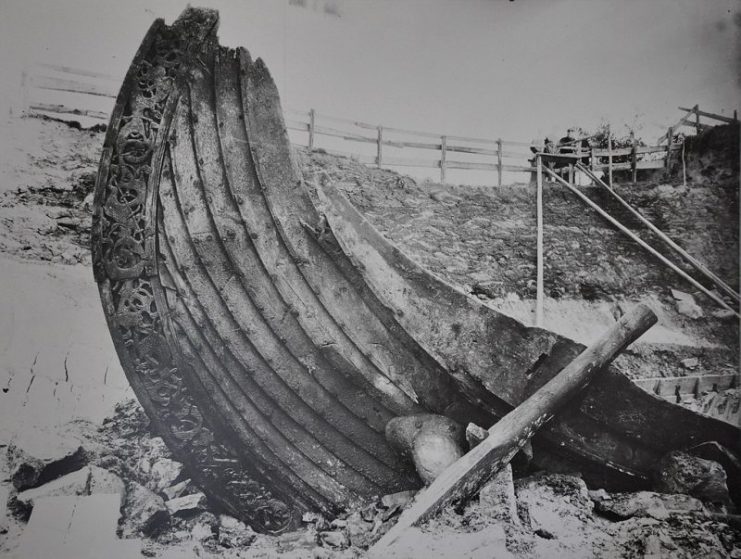
Seagoing Viking longships were propelled across the ocean by two forces: wind and manpower. We know this from both the manner in which they are depicted in primary source texts, and the number of remarkably intact Viking longships (sans sails) that have been unearthed by archaeologists. The most famous of these are the Gokstad ship, the Skuldelev ships, and the Oseberg ship.
All of these ships have iron mounting points for a central mast, to which a sail would be attached. Of these ships, the Gokstad ship, built in approximately 900 AD, is the best preserved. It was discovered with the remnants of thirty-two shields, painted alternately in yellow and black, which would have been mounted on its sides.
This alone provides evidence that Viking longships were likely colorful rather than drab. A fragment of woolen sailing cloth was discovered on the ship too, although its original color could not be determined.
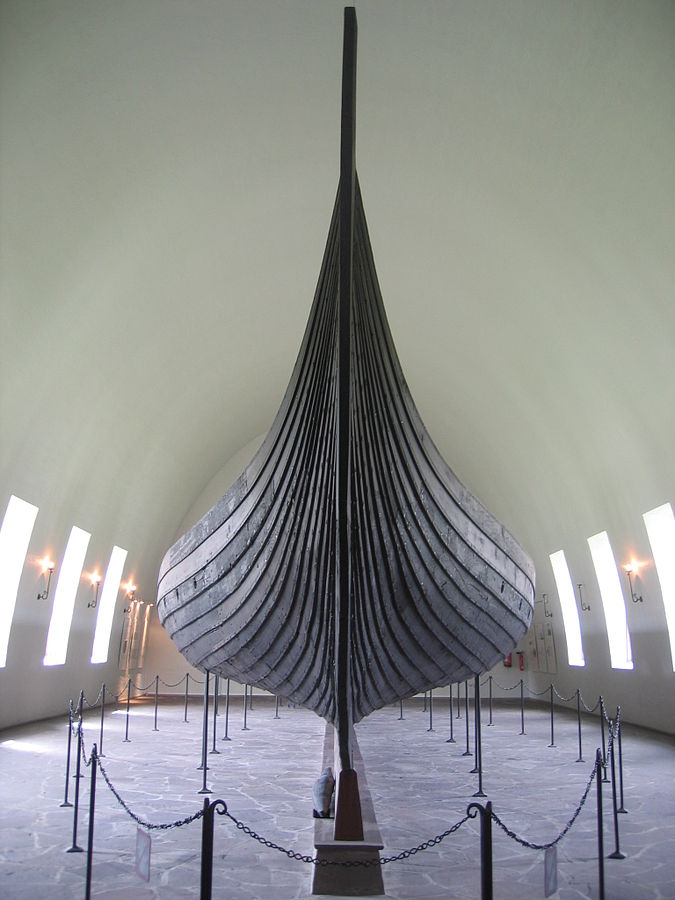
Other sources from the time provide evidence that Viking longship sails were, among other colors and patterns, red and white. The most well-known of these sources is the Bayeux Tapestry.
Although it depicts the events of William the Conqueror’s invasion of England in 1066, which marked the end of the Viking age, there is little reason to believe that the Norman longships shown in the tapestry would have been much different from the ships Vikings had been using for the few centuries prior to 1066.
The ships depicted in the tapestry all have multicolored, striped sails. They also have the famous carved prow heads, carved in the fearsome Viking style in the likeness of dragons, wolves, bears or other dangerous beasts.
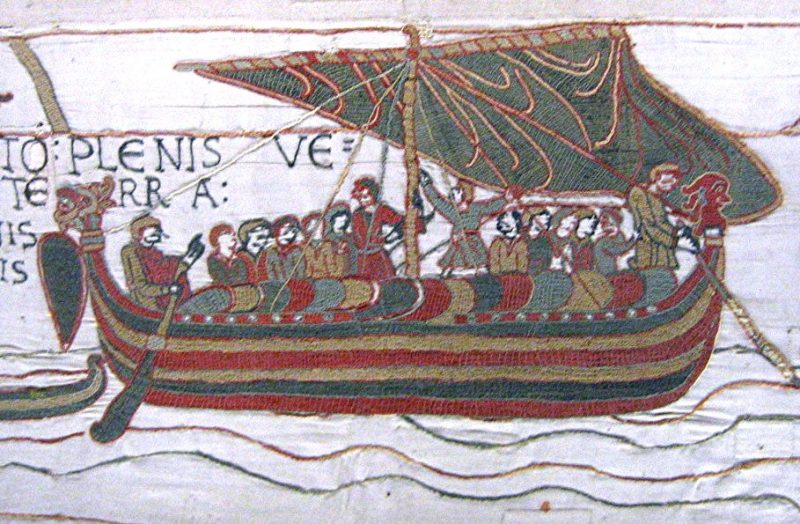
There are also the Norse sagas in which longships are described in great detail, and red and white striped sails among other colors and patterns are mentioned on numerous occasions.
In addition, there is the fact of simple practicality and the limitations of hand weaving cloth: to construct a square or rectangle of cloth large enough to serve as the sail of a ship, a number of smaller strips of cloth would need to be joined together into one large piece. Using this method, it would have been easy to join strips of different colors together.
Furthermore, we now know that the Vikings generally liked bright, vibrant colors, rather than the drab grays, browns and blacks that are often shown in TV shows.
They would have been exposed to materials and clothes of many colors during their extensive journeys of trading and raiding, and there is no reason to believe that their love of bright colors would not have extended to the construction and design of their longships.
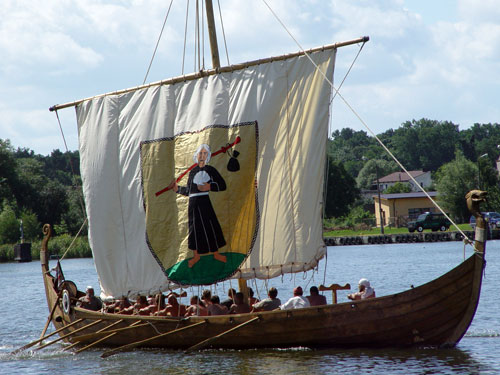
Read another story from us: The Last Great Viking Invasion: Battles of Fulford and Stamford Bridge
Also, while the concept of heraldry had not yet been developed in the Viking age, the use of colors to signify membership to a certain group or allegiance to a particular king or lord was an ancient, almost universal practice. Different colored sails could have been used to signify to whom a ship was loyal, or who owned it.
Therefore, next time you watch a TV show or movie that shows Viking ships as having red and white striped sails, now you know at least that that little detail is no modern day Hollywood invention – that it is, in fact, likely to be historically accurate.
